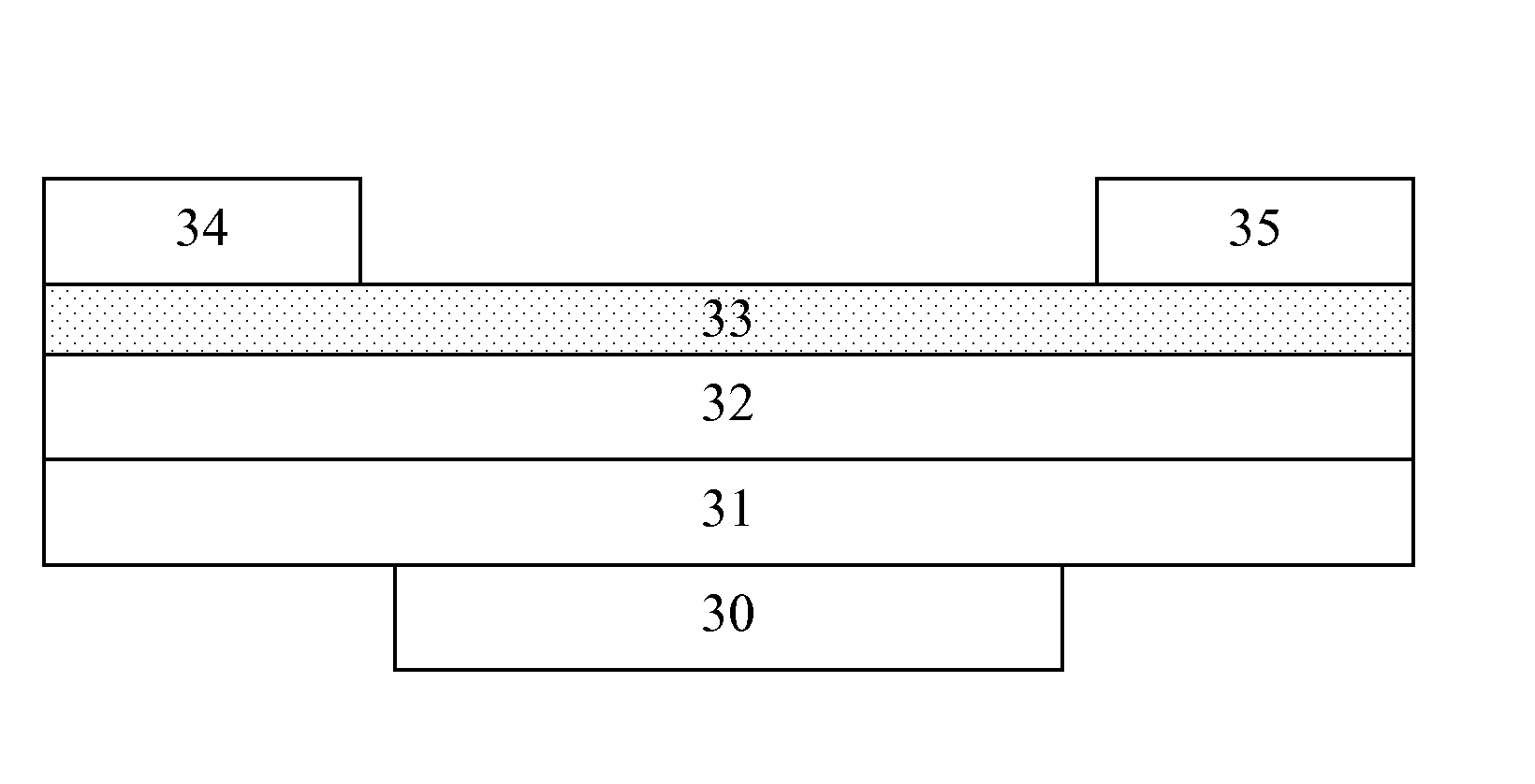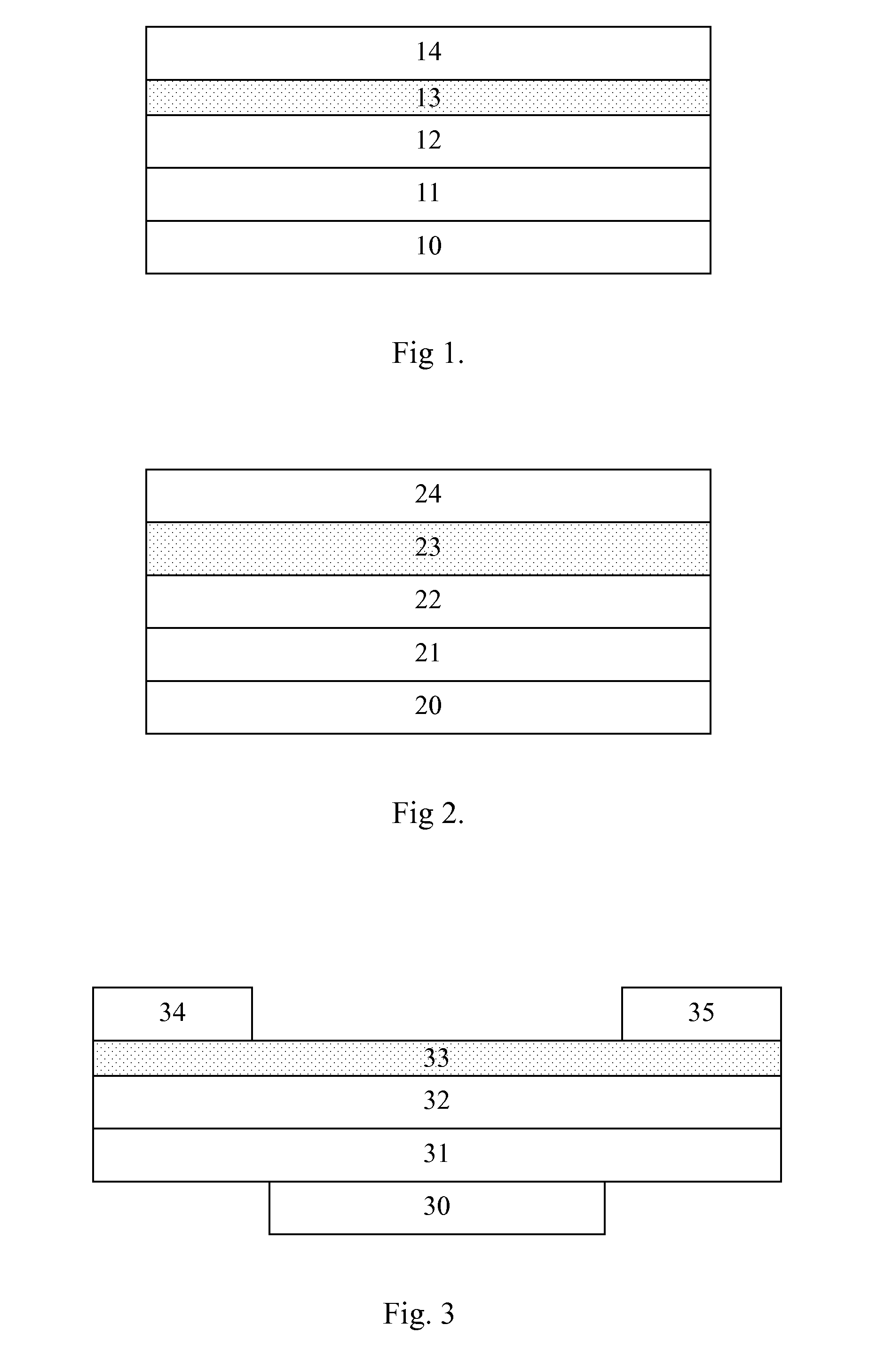Organic Electronic Device
a technology of electronic devices and thin films, applied in thermoelectric devices, organic chemistry, group 5/15 element organic compounds, etc., can solve the problems of high operating voltage, difficult processing, and high reactiveness of thin film transistors, and achieve the effect of lowering operating voltage, improving oled life, and improving electronic interface to cathod
- Summary
- Abstract
- Description
- Claims
- Application Information
AI Technical Summary
Benefits of technology
Problems solved by technology
Method used
Image
Examples
##ventive example 1
Inventive Example 1
[0128]A similar device was produced as in Comparative Example 1, with the difference that the ETL was deposited as a 36 nm thick layer of a mixture between the compound according to Formula (I) and ETM1 with a weight ratio of 1:1.
[0129]This device showed a slightly increased voltage of 4.3 V at a current density of 10 mA / cm2, an extremely enhanced luminance of 532 cd / m2 at a current density of 10 mA / cm2 with a current efficiency of 5.3 cd / A at the same current density. These values are remarkable good for a blue emitting OLED. Given the high performance, it is possible to operate an OLED with same or higher light intensity than the OLEDs of the comparative examples at a lower voltage.
[0130]OLEDs with other ETMs and the compound according to Formula (I) showed similar performance improvements OLEDs with other ETMs and the compound according to Formula (I) showed similar performance improvements, as shows the Table 1:
ETL Voltage (V) CIE CIE QEff (%) atcompoundmatrix...
PUM
 Login to View More
Login to View More Abstract
Description
Claims
Application Information
 Login to View More
Login to View More - R&D
- Intellectual Property
- Life Sciences
- Materials
- Tech Scout
- Unparalleled Data Quality
- Higher Quality Content
- 60% Fewer Hallucinations
Browse by: Latest US Patents, China's latest patents, Technical Efficacy Thesaurus, Application Domain, Technology Topic, Popular Technical Reports.
© 2025 PatSnap. All rights reserved.Legal|Privacy policy|Modern Slavery Act Transparency Statement|Sitemap|About US| Contact US: help@patsnap.com



